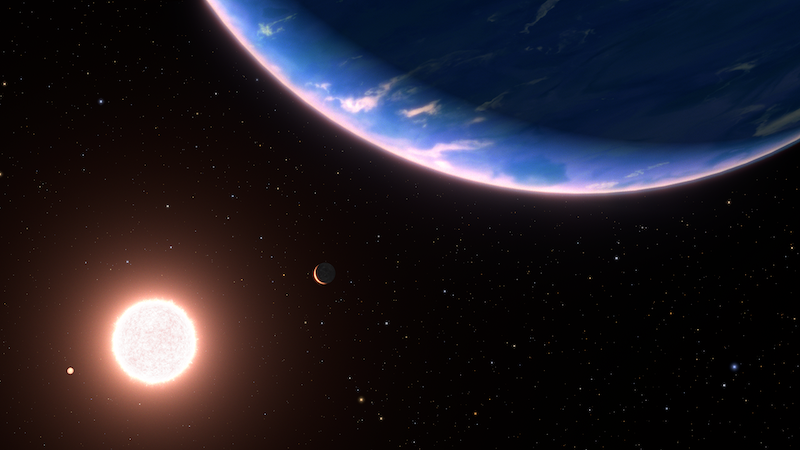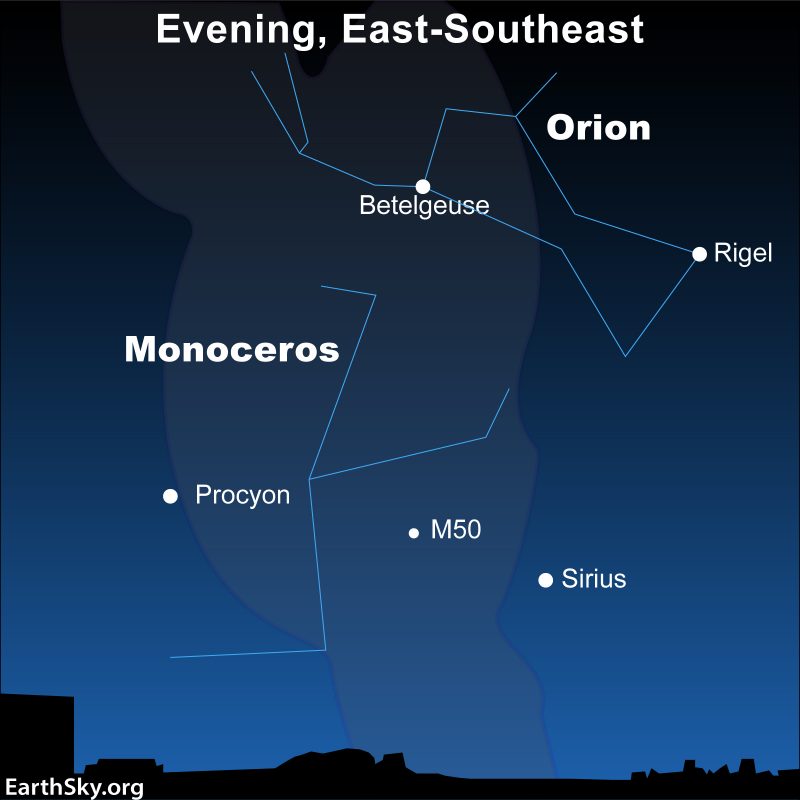
Surf’s up! Surfing on the ocean is fun, but would you like to try it on … a star? On August 10, 2023, researchers announced that a huge heartbeat star has “tidal waves” on its surface as tall as three suns on top of each other. It’s the first time that astronomers have seen this phenomenon – at this scale – on a heartbeat star.
The Harvard and Smithsonian research team published their peer-reviewed paper on August 10, 2023, in Nature Astronomy.
Meet a heartbeat star with waves
The star system – MACHO 80.7443.1718 – was first discovered in the 1990s. It is a heartbeat star system, with two close binary stars. Heartbeat stars periodically pulse and vary in brightness, kind of like a heartbeat on an electrocardiogram (EKG) machine, hence the name. When the two stars are at their closest, they can actually create tides on their surfaces, reminiscent of tides on the ocean here on Earth. Although there’s no water involved, of course, just hot, roiling star material. But the effect is similar.
In fact, these tides can even distort the shapes of the stars. As a result, the amount of starlight we see from them depends on whether their elongated or narrower “squashed” sides are facing us.
Giant waves on heartbeat star surprise astronomers
With MACHO 80.7443.1718, however, the researchers saw something different and unusual. This particular heartbeat star system was fluctuating in brightness up to 200 times greater than had been observed before in any other heartbeat star system. Typically, heartbeat stars vary in brightness by about 0.1%. MACHO, however, exhibited variations of up to 20%. Lead author Morgan MacLeod at the Center for Astrophysics | Harvard & Smithsonian said:
We don’t know of any other heartbeat star that varies this wildly.
So, what could cause this?
The astronomers found the answer: giant waves on the larger of the two stars. Each star interacts gravitationally with the other star. Consequently, this produces tides on the larger star. And those tides – or tidal waves – are massive, reaching a height of three of our own sun stacked on top of each other. That works out to 2.7 million miles (4.3 million km) tall! As MacLeod simply put it:
These are really big waves.
They are! And these waves behave much like tidal waves on Earth. They start out as smaller swells, then start curving over and “breaking.” Indeed, as the paper’s other author, Avi Loeb, noted:
Breaking waves in stars are as beautiful as those on the beaches of our oceans.
Massive waves on heartbeat star create new stellar atmosphere
The waves are so large, in fact, that they have another effect on the star. They cause the star’s surface to spin faster. As a result, the star jettisons large amounts of stellar gas. This gas then forms a rotating atmosphere around the star. MacLeod likens it to a:
… spinning pizza crust flinging off chunks of cheese and sauce.
On the star, a new giant wave occurs about once a month. These repeated occurrences have long-term effects on the star. In fact, the star is no longer round, but more oblate, about 50% wider at its equator than at its poles. Basically it’s a very flattened sphere.

More heartbeat stars like MACHO
Because of this star’s extreme heartbeat, the researchers are calling it a heartbreak star. The researchers say that there should be more out there like it. NASA’s Kepler space telescope ultimately discovered nearly 1,000 heartbeat stars before it ended its mission. Of those, about 20 show large brightness variations similar to MACHO. MacLeod said:
This heartbreak star could just be the first of a growing class of astronomical objects. We’re already planning a search for more heartbreak stars, looking for the glowing atmospheres flung off by their breaking waves.
MacLeod added:
We are watching a brief and transformative moment in a long stellar lifetime.
Just the existence of heartbeat stars still puzzles astronomers. And, could some of them even have a third star? As Susan Mullally at the SETI Institute said in 2016:
The mere existence of heartbeat stars is a bit of a puzzle. All the tidal stretching of these heartbeat stars should have quickly caused the system to evolve into a circular orbit. A third star in the system is one way to create the highly stretched-out, elliptical orbits we observe.
Bottom line: Giant waves on heartbeat star MACHO 80.7443.1718 are as tall as three suns, astronomers say. They give a new meaning to the phrase “surf’s up!”
Source: Breaking waves on the surface of the heartbeat star MACHO 80.7443.1718
Via Center for Astrophysics | Harvard & Smithsonian
The post Surf’s up! Waves on heartbeat star are as tall as 3 suns first appeared on EarthSky.






0 Commentaires